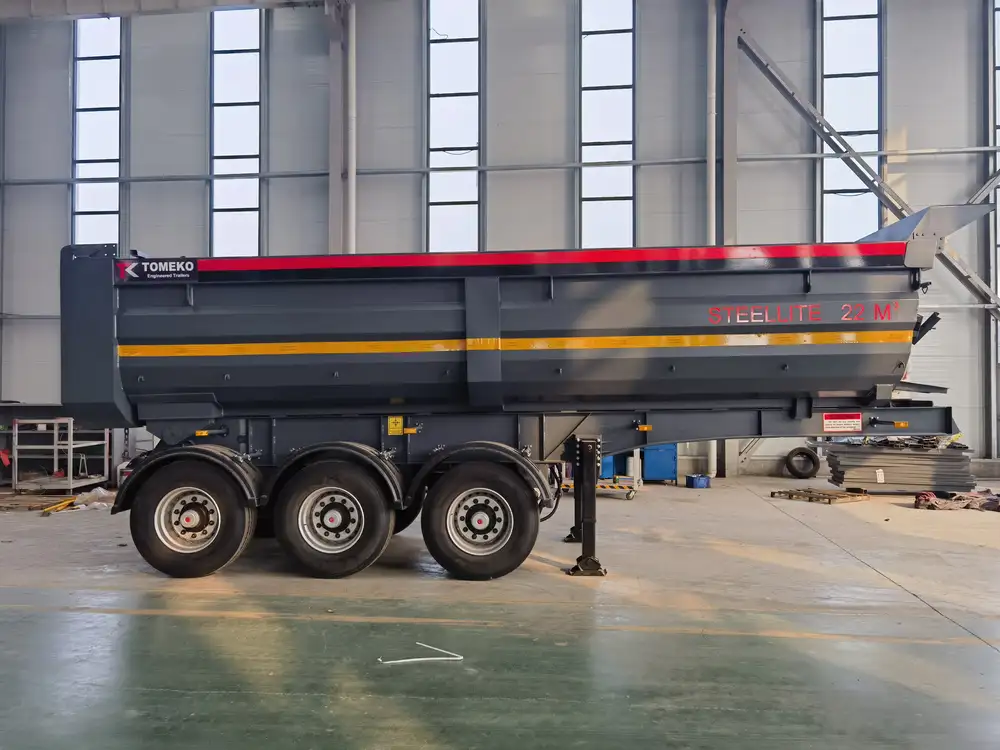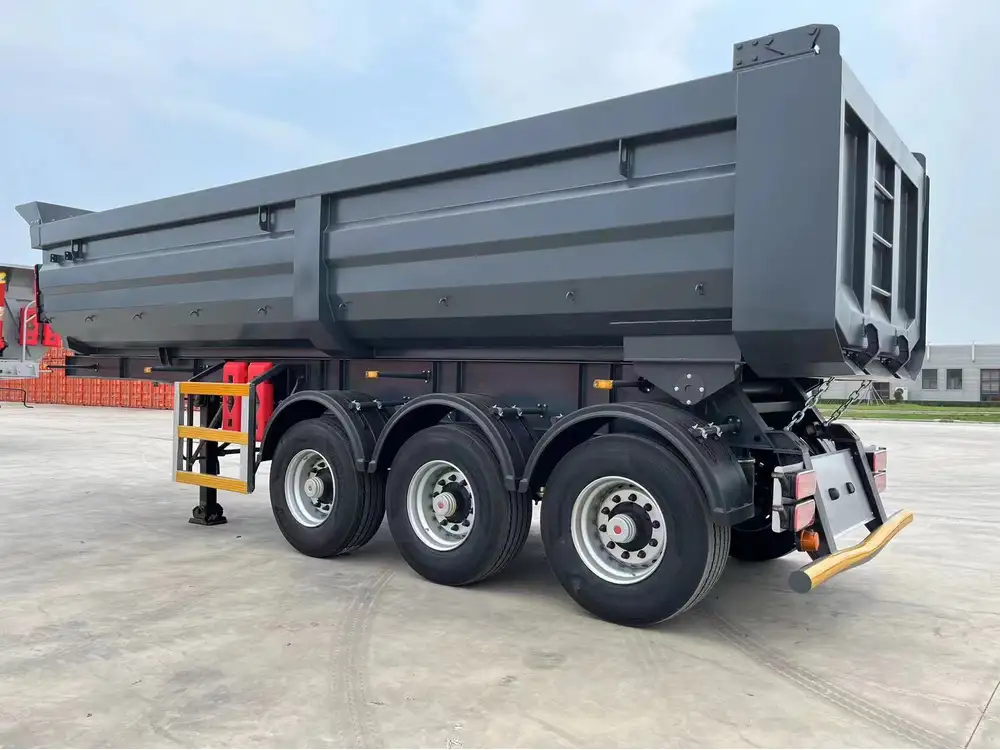Semi box trailers play a vital role in the logistics and transportation industry, providing essential capabilities for hauling goods across various distances. Understanding the dimensions of these trailers, particularly their height, is crucial for numerous stakeholders ranging from manufacturers to transportation companies, drivers, and regulatory bodies. In this guide, we’ll explore numerous aspects related to the height of semi box trailers, including standard measurements, factors influencing their height, and best practices for loading, safety, and compliance.
What is a Semi Box Trailer?
A semi box trailer, commonly referred to simply as a box trailer, is a type of trailer characterized by its enclosed structure. These trailers are mounted on a tractor unit and are designed to transport goods securely while protecting them from weather elements. The enclosed nature minimizes exposure and theft, making them a preferred choice for many logistics providers.
Common Dimensions of Semi Box Trailers
Understanding the height of a semi box trailer requires knowledge of standard dimensions. Below is a detailed breakdown:
| Trailer Type | Length | Width | Height |
|---|---|---|---|
| Standard Dry Van | 48 – 53 ft | 8.5 ft | 13.5 – 14 ft |
| Refrigerated | 48 – 53 ft | 8.5 ft | 13.5 – 14 ft |
| High Cube | 53 ft | 8.5 ft | 14 – 14.5 ft |

Standard Height Requirements
On average, semi box trailers must adhere to specific height regulations which can vary by state and local jurisdiction. Most states in the U.S. stipulate a maximum height limit of 13.5 feet (or 162 inches) for any trailer, including semi box trailers. Some regions may permit slightly taller trailers under special circumstances, but it’s essential for operators to verify local laws.
High Cube Trailers: The Exception
High cube trailers, designed for increased volumetric capacity, often measure between 14 and 14.5 feet in height. Their larger internal dimensions enable greater load capacity, making them suitable for transporting bulk goods or larger items. Companies might opt for these trailers to capitalize on their extra foot of height, but they must ensure compliance with height regulations.
Importance of Height Considerations
Understanding the height of a semi box trailer is critical for several reasons:

1. Road Clearance
Exceeding the height limit can lead to unnecessary encounters with low bridges, overhangs, or other structural obstacles that can result in accidents or damages. Using over-height vehicles can cause significant disruptions, leading to traffic delays and costly repairs.
2. Loading and Unloading Efficiency
The height also plays a crucial role in determining how easily goods can be loaded or unloaded. The design of loading docks, ramps, and cranes often factors in trailer heights, and variability can cause inefficiencies. Knowing the height of your trailer aids logistics planners in coordinating operations seamlessly.
3. Regulatory Compliance
Transport operators must comply with specific federal and state regulations regarding dimensions and weight limits. Operating with a trailer that is too tall can yield fines, permit issues, and, in the worst-case scenario, the trailer being taken out of service.

Factors Affecting the Height of Semi Box Trailers
Several factors contribute to the height of semi box trailers, impacting manufacturers’ designs and users’ choices. Key factors include:
1. Type of Goods Being Transported
The nature of the cargo plays a significant role. For instance, food products, electronics, and fragile goods often require specialized trailers that may have a specific height to ensure safety during transport.
2. Trailer Design
Trailers come in various configurations, including flatbed, refrigerated, and dry van, each designed for specific loads. This diversity leads to variations in height. For example, flatbed trailers are generally lower than boxed options due to the absence of side walls.

3. Manufacturer Specifications
Different manufacturers may produce trailers with slight variations in dimensions. Consulting manufacturer specifics is advisable for precise height measurements depending on the model and design.
Best Practices for Managing Trailer Height
To ensure safe transportation, compliance, and operational efficiency, it is imperative to follow best practices:
1. Verify Trailer Dimensions Regularly
Operators should regularly check trailer dimensions, taking note of any modifications that might alter the height, such as added components or accessories. This helps remain compliant with regulations.

2. Utilize Height Measuring Devices
Investing in height measuring tools can help truck drivers and logistics managers accurately determine the height of their trailers before heading out on routes. This minimizes the risk of operational setbacks.
3. Ensure Load Distribution
An uneven load can affect the trailer’s height. Ensuring a balanced load distribution can aid in maintaining acceptable height measurements and improve vehicle handling.
4. Familiarize with Transport Routes
Before embarking on a journey, it’s vital for operators to familiarize themselves with planned routes, especially concerning low-clearance bridges or tunnels. Updated maps or GPS systems can provide real-time clearance information.

Understanding Weight Restrictions
Height is often interlinked with weight, as excess weight in a trailer can impact its height through load compression. Understanding maximum weight regulations is critical for a successful haul.
Maximum Weight Limits for Semi Box Trailers
The Federal Highway Administration (FHWA) enforces weight regulations, with maximum allowable weights on a standard semi not exceeding 80,000 pounds total combined vehicle weight, including both the tractor and trailer. Here’s a quick summary of standard weight limits for semi trailers:
| Trailer Type | Maximum Weight |
|---|---|
| Standard Dry Van | 80,000 lbs |
| Refrigerated | 80,000 lbs |
| High Cube | 80,000 lbs |
Load Limits Per Axle
Additionally, weight limits apply to each axle, typically set at 20,000 lbs per axle, with specific exemptions applying to particular types of vehicles or designated routes.

Conclusion
The intricate world of semi box trailers is shaped by a myriad of considerations surrounding height. With three factors—height regulations, load profiles, and safety protocols—at play, understanding how tall a semi box trailer is becomes fundamental for all industry participants. Whether as manufacturers, operators, or logistics professionals, knowing the significance of these measurements and adhering to best practices can enhance safety, operational efficiency, and regulatory compliance in a highly intricate transportation landscape.
For all involved in the industry, we encourage you to continuously monitor the dimensions of your semi box trailers, remain informed about state and federal regulations, and embrace consistent practices that prioritize safety and effectiveness in operations. Understanding how tall a semi box trailer is can significantly impact your logistics operations, so make it a priority in your planning and transportation strategies.



